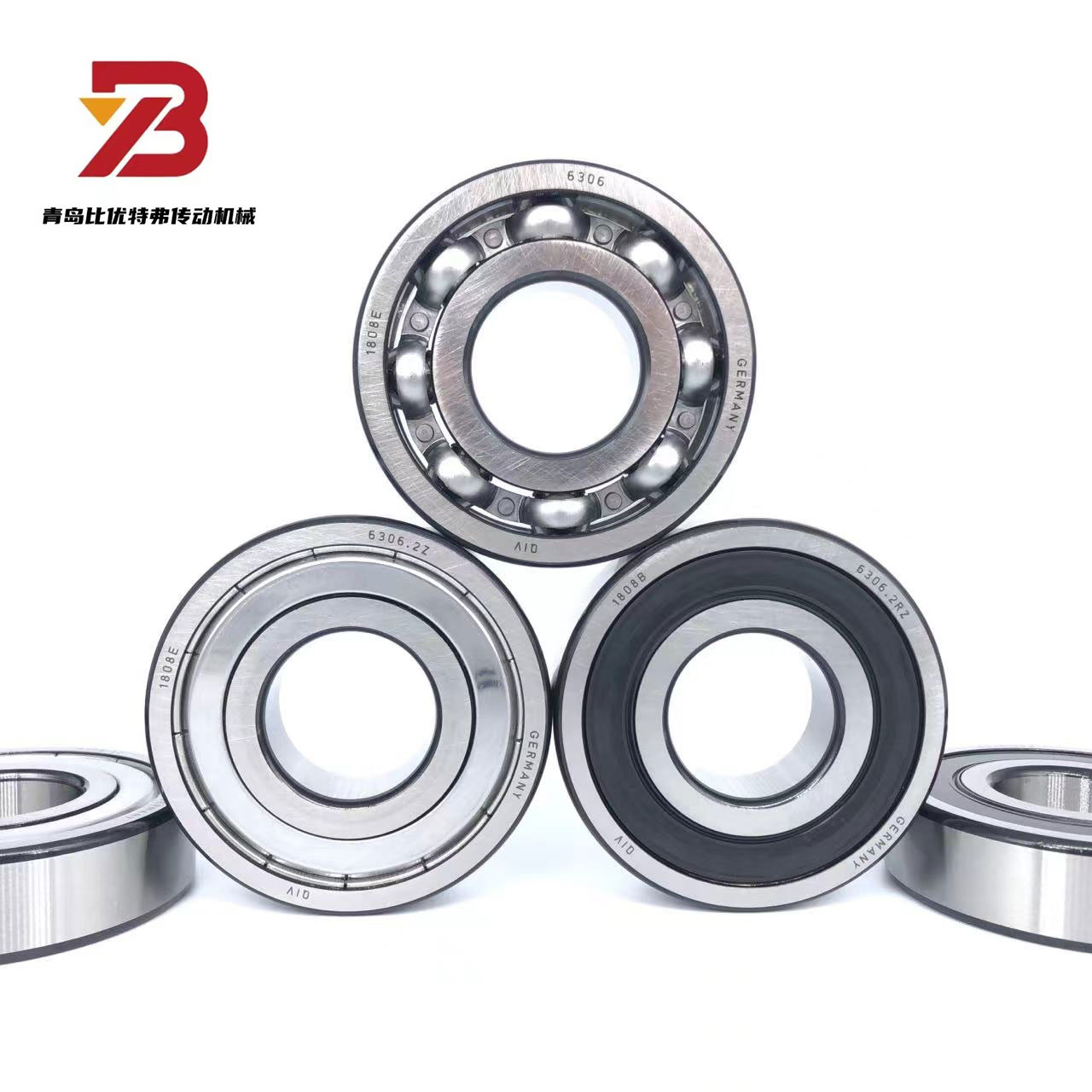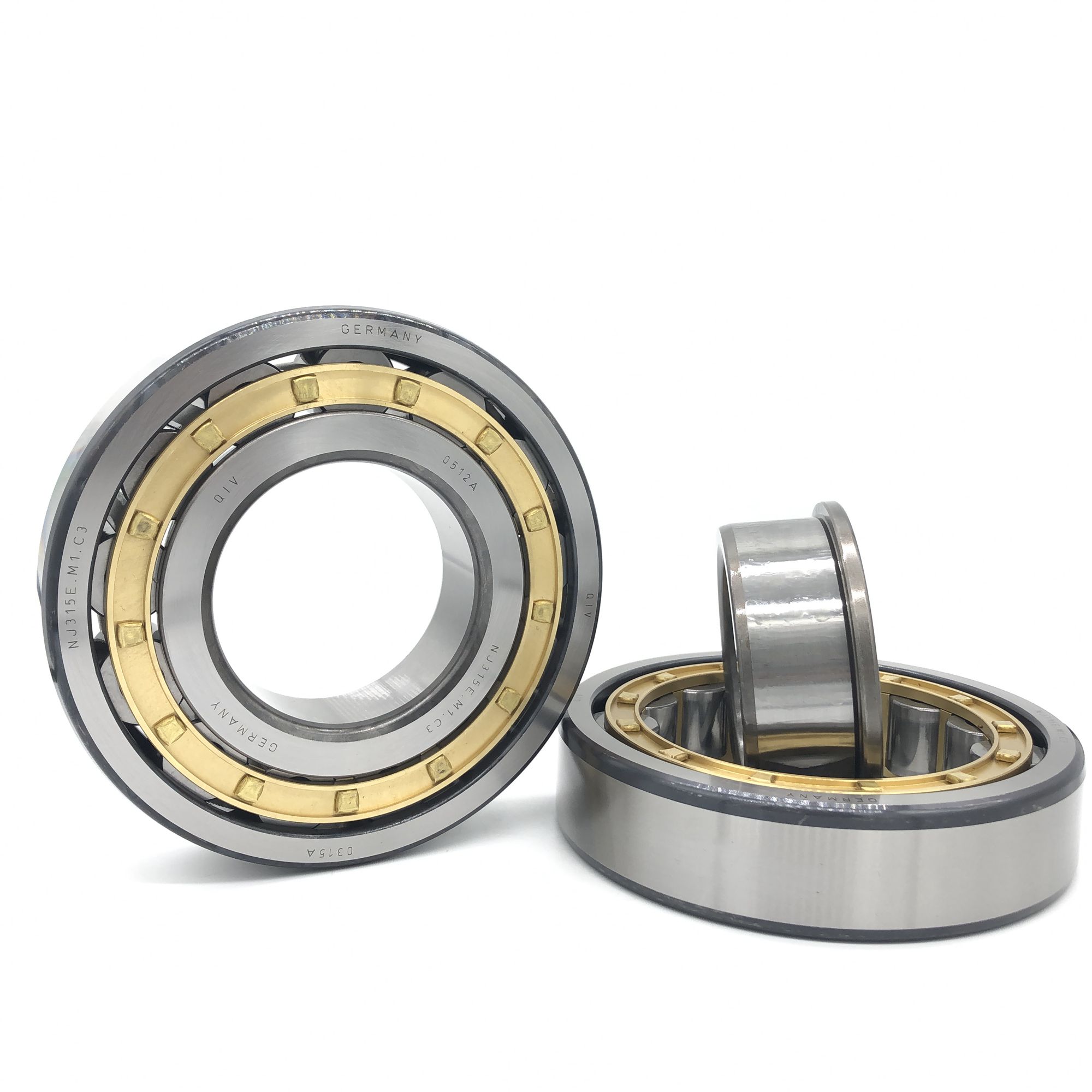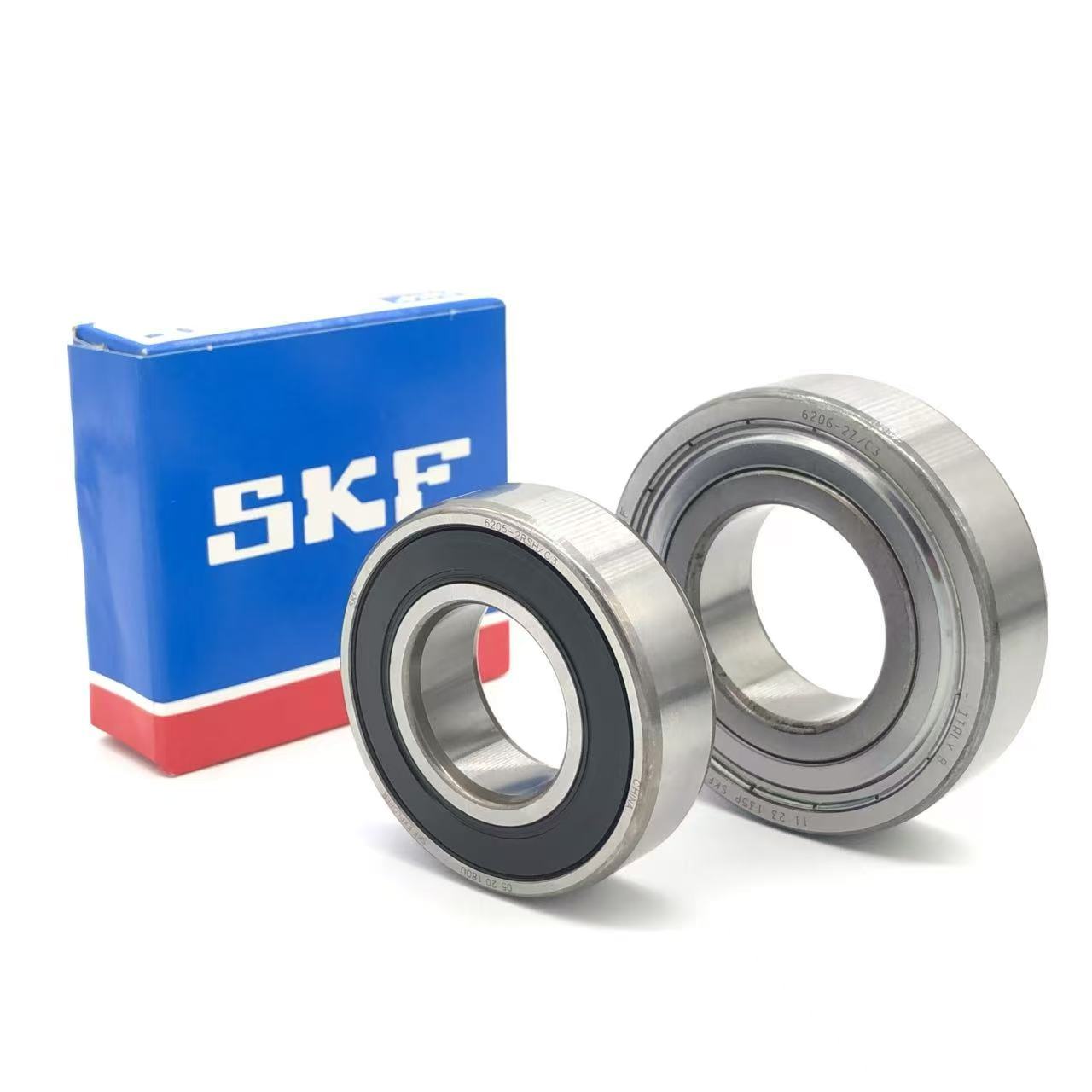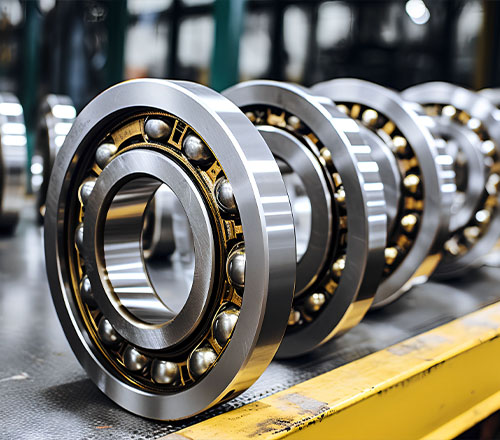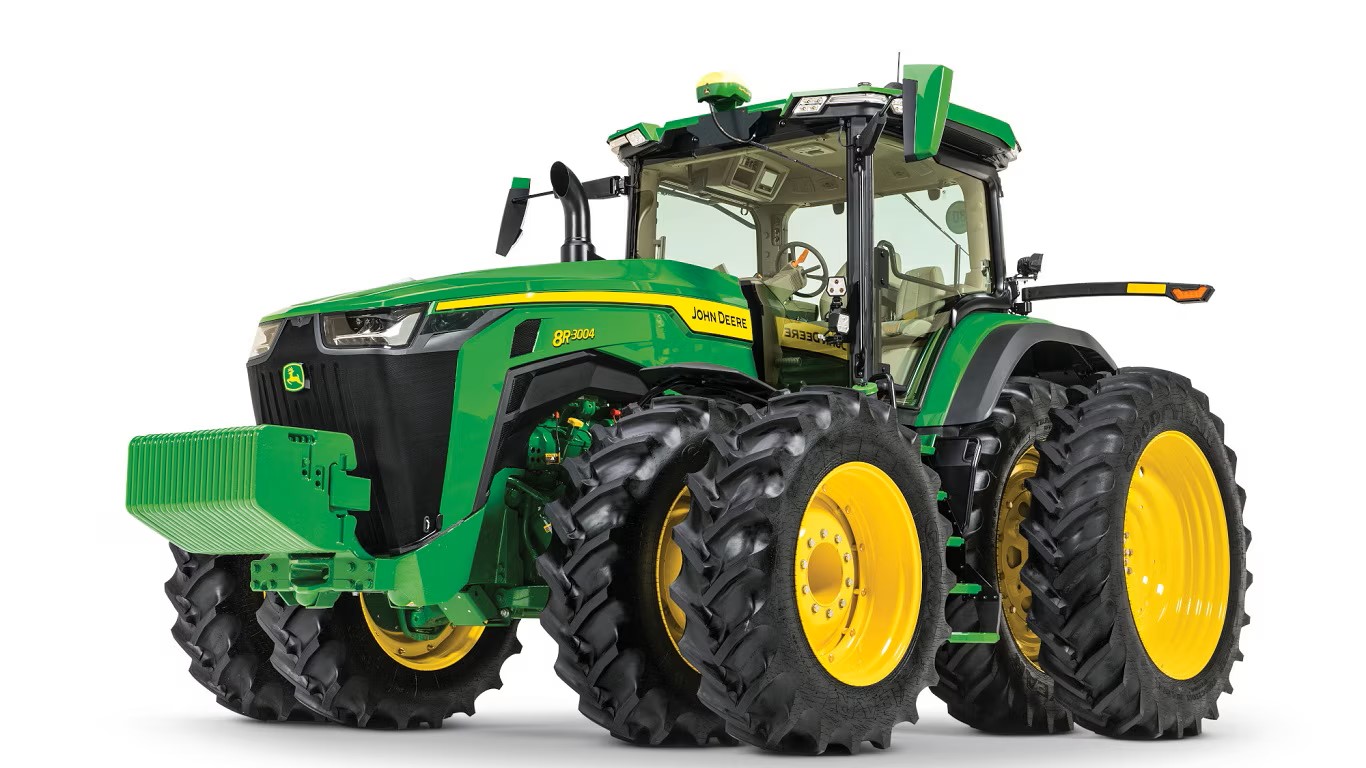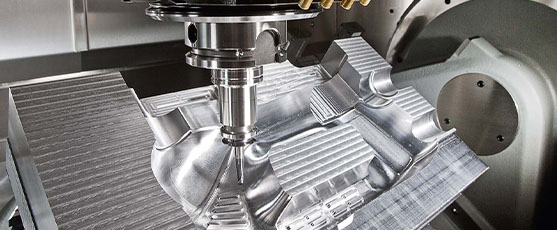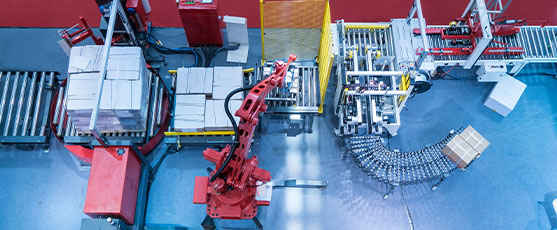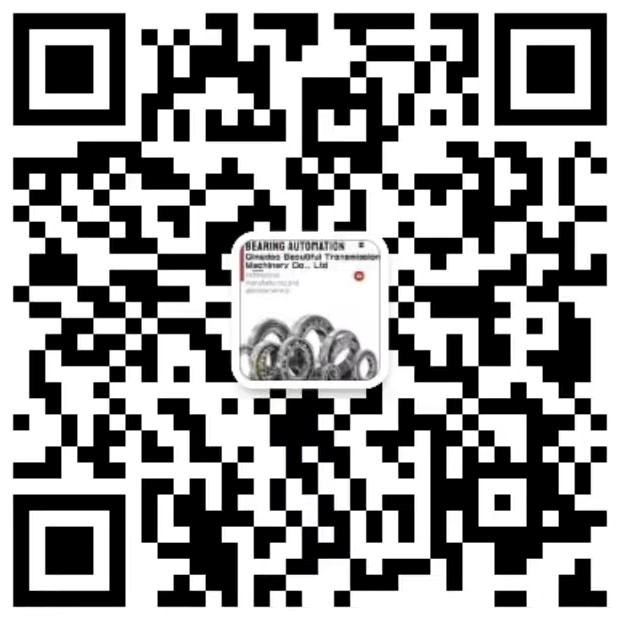Industrial bearings: modern machinery ‘joints’ and power core
2025-05-26 11:48:01
Bearings, as an indispensable ‘joint’ in mechanical equipment, bear the core function of supporting rotating parts, reducing friction and transferring loads. Whether it is a high-speed motor, heavy-duty operation of the engineering machinery, or precision operation of the instrumentation, bearings are the key components that determine the performance, life and reliability of the equipment. This article will be from the structural principle, classification and application, selection points and technology trends and other dimensions, a comprehensive analysis of the world of industrial bearings.
The basic structure and working principle of bearings
The core function of bearings is to convert sliding friction into rolling friction (or low-friction sliding) through rolling bodies (such as steel balls, rollers) or sliding surfaces, thus reducing energy loss and supporting the load. Its basic structure includes:
Inner ring: fits with the shaft and rotates with the shaft.
Outer ring: fits with the bearing housing, fixed and immobile.
Rolling body: the core element of load transmission (steel ball, roller, needle, etc.).
Cage: Separate rolling body, prevent collision and guide its trajectory.
Seal/dust cap: prevents lubricant leakage and the intrusion of external contaminants.
Principle of operation:
When the shaft rotates, the rolling body rolls between the inner and outer rings, replacing sliding contact by rolling contact, significantly reducing the coefficient of friction (rolling friction coefficient is only 1/10~1/50 of sliding friction), thus improving mechanical efficiency and reducing wear.
The main types and characteristics of industrial bearings
There are many types of bearings, which can be classified according to the shape of rolling body, bearing direction, lubrication method and so on. The following are the most common types of bearings and their characteristics in the industrial field:
1. rolling bearings
Characteristics: simple structure, low cost, can bear both radial and axial loads.
Applications: motors, home appliances, automotive wheel hubs and other general-purpose scenarios.
Features: high load carrying capacity, can withstand large radial and unidirectional axial loads.
Applications: automotive gearboxes, construction machinery, heavy machinery.
Features: pure radial load support, high rigidity, allowing high speed.
Applications: generators, rolling mills, crankshaft main bearings.
Features: automatic centring function, to adapt to shaft deflection or installation errors.
Application: ship propulsion shaft, mining machinery.
2. Sliding bearings
Features: no rolling body, rely on lubricant film to achieve fluid lubrication, high load carrying capacity, low noise.
Applications: large turbines, hydraulic turbines, ship engines.
Types: metal plain bearings (such as copper alloy), non-metallic plain bearings (such as PTFE bushings).
3. Special purpose bearings
Angular contact ball bearings: can withstand both radial and bi-directional axial loads, used for precision machine tool spindles.
Thrust bearings: designed to withstand axial loads, commonly used in lifts, vertical pumps.
Needle roller bearings: slender needle roller structure, suitable for radial space restricted scenarios (such as steering system).
Industrial bearing materials and manufacturing process
Bearing performance depends directly on the material and manufacturing process:
Steel: the mainstream material for high-carbon chrome bearing steel (such as GCr15), need to go through vacuum degassing, quenching + low temperature tempering and other processes to ensure that the balance of hardness (HRC 60 ~ 64) and toughness.
Ceramic bearings: Silicon Nitride (Si3N4) ceramic balls, high temperature resistant (up to 1200°C), anti-magnetic, insulated, suitable for high-speed spindles or semiconductor equipment.
Surface treatment technology: such as DLC coating (diamond-like coating) can reduce the coefficient of friction and prolong the life; carburising and quenching to improve the surface hardness and fatigue resistance.
Industrial bearing selection points
Selection of suitable bearings need to consider the following factors:
Load type
Radial load-oriented → deep groove ball bearings, cylindrical roller bearings.
Axial load-oriented → angular contact ball bearings, thrust bearings.
Compound load → tapered roller bearings, spherical roller bearings.
Speed requirement
High-speed scenes (such as spindle) → Angular contact ball bearings, ceramic bearings.
Low-speed heavy load → Spherical roller bearings, plain bearings.
Environmental conditions
High temperature environment → high temperature resistant grease + ceramic bearings.
Corrosive media → Stainless steel bearings (e.g. AISI 440C) or nickel-plated surface treatment.
Mounting space
Restricted radial space → needle roller bearings.
Limited axial space → thin-walled series bearings (e.g. 7000 series angular contact ball bearings).
Application Scenarios of Industrial Bearings
Automotive industry: wheel hub bearings to support the weight of the body, CVJ universal joint bearings to ensure transmission smoothness.
Energy field: wind power spindle bearings need to withstand megawatt load, life requirements of more than 20 years.
Precision manufacturing: CNC machine tool spindle bearing accuracy level of P4/P5, radial clearance error of less than 1 micron.
Mining machinery: large tapered roller bearings in the crusher to withstand impact loads and continuous heavy pressure.
Technology Trends: Intelligent and Green
Intelligent bearings: integrated sensors monitor temperature, vibration and load in real time, and warn of failures through the Internet of Things.
Long-life design: vacuum carburisation, nano-lubrication technology, life expectancy increased by more than 30%.
Environmentally friendly materials: bio-based lubricants, recyclable bearing steel to reduce carbon emissions.
Although small, industrial bearings are the cornerstone of modern industry. From the ‘zero defect’ standard of high-speed railway bearings to the ‘ultra-long life’ challenge of wind power bearings, bearing technology has always been the same as industrial progress. Select the right bearing, scientific use, accurate maintenance, is to enhance the reliability of equipment and economic core strategy. In the future, with the integration of new materials and intelligent technology, bearings will continue to evolve to higher performance, more intelligent direction.








